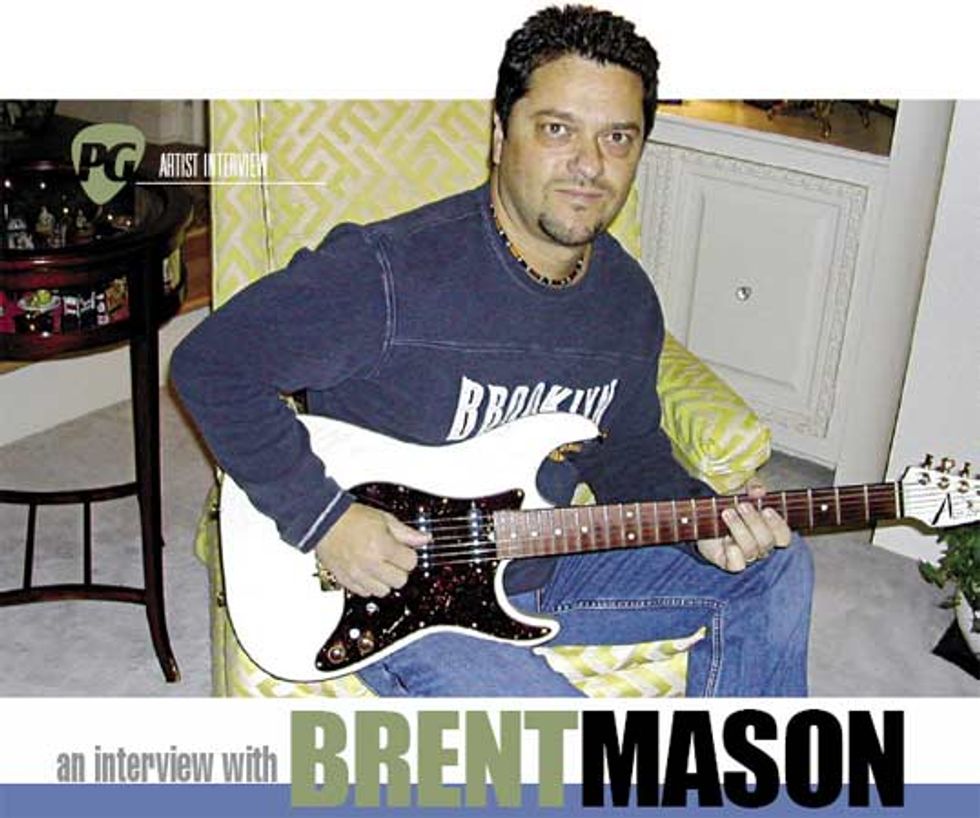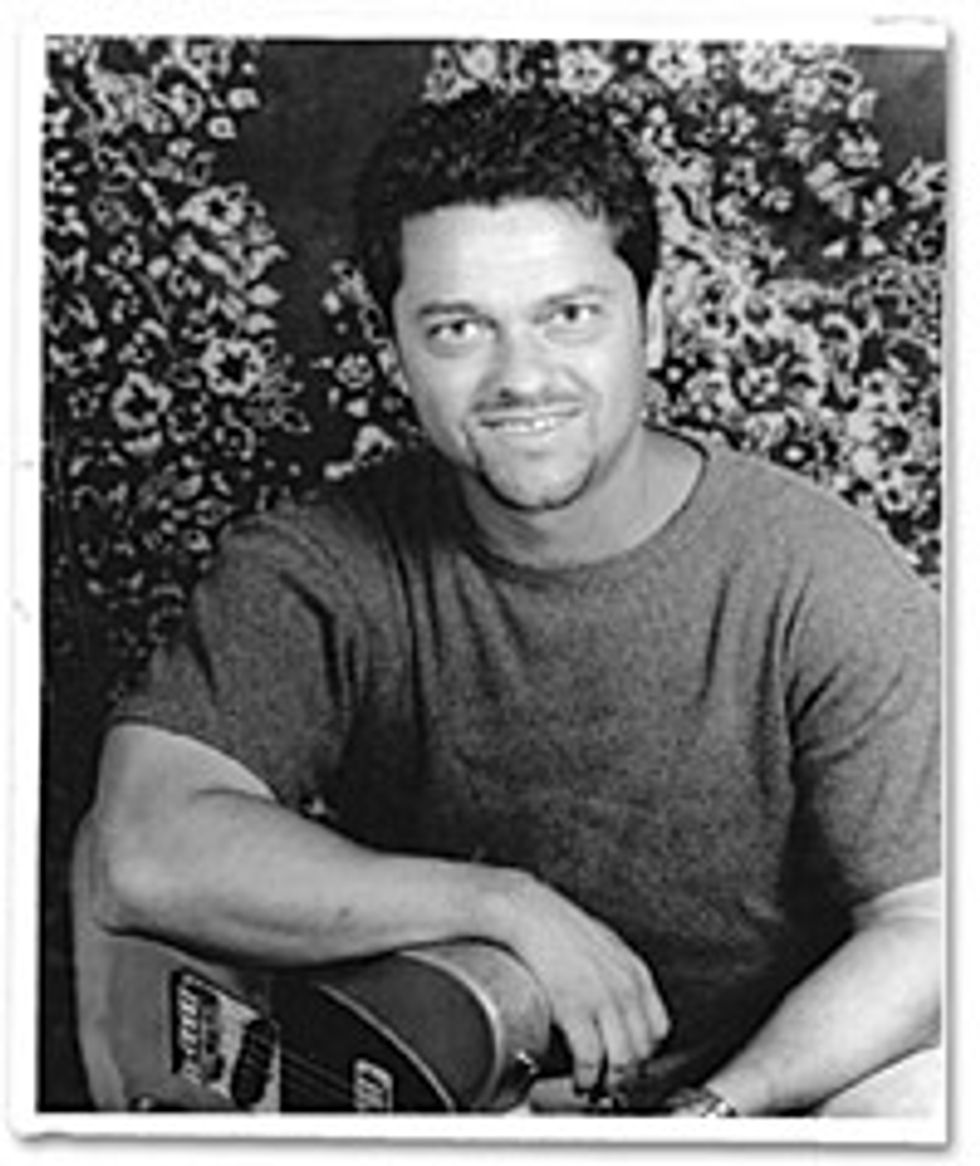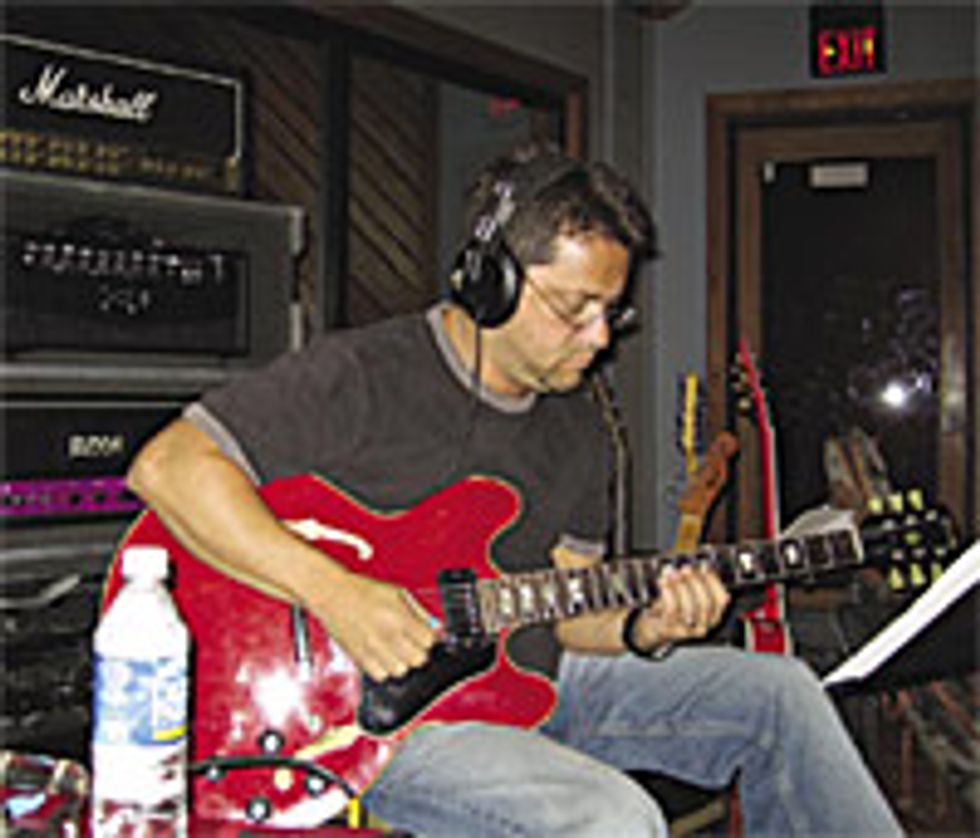When you are talking about modern country music and signature Telecaster tone, you are talking about Brent Mason

| When you are talking about modern country music and signature Telecaster tone, you are talking about Brent Mason. Brent actually plays on just about any country album that comes from Nashville – he is the first call for guitarists in the Tennessee city and has played with almost every artist you can imagine. Brent has owned country music for over a decade, playing on at least seven of the songs in the top ten at any given time – in any given year – since the early ‘90s. For many years he has won the annual Music City Allstars Award, given to the musician who has played on the most top ten radio hits in a given year. Brent was so dominant in the CMA and Academy of Country Music Awards from 1993-2002 that he was “retired” from his category, due to a clause that said that no one could win over ten years in a row. Brent’s inventive style and masterful playing have made him one of the most in-demand session guitarists in the world. |
When did you start playing?
I started playing music around the age of seven or eight, listening to a Ray Charles album of my mother and father’s. I had no knowledge of chords, so I used a table knife to play slide on an old Mexican guitar along with the songs.
What have been your most important musical influences?
My dad had a few albums of Merle Haggard and the Strangers and he was also a fan of Ernest Tubb. He also had albums of Merle Travis and Chet Atkins. Then he brought home a Jerry Reed album, called Nashville Underground. It blew my mind! I was only about eleven, but I took that album and tried to copy every lick on it. I purchased every Reed album after that, learning every song I could.
Around the age of 17, I broadened out from playing the “gut string” guitar and got an electric guitar. I then started to listen to George Benson, Pat Martino, Buddy Emmons, Jeff Beck and more … kind of a study of all things music. I left country for a while to explore jazz, R&B, and rock. I came back to country when I came to Nashville.
 What is working with Alan Jackson like?
What is working with Alan Jackson like? Alan Jackson is great to work for, because he is very focused on what he does and his sound. He loves the Telecaster and loves the vintage sound – like the old “Bakersfield” sound if you will. He lets the musicians play a lot on his recordings because he thinks that’s what a band should do – long instrumental breaks, lots of fills. He says that is the way you would do it if you were out in a club or honky tonk, so the people can dance, and that is what country music is about.
Are you friends with other studio musicians you’ve played with?
All the players I play with are very close friends. We constantly stay in contact when we are not in the studio, that’s the great thing about the Nashville scene – it’s a very close-knit society. I know how superficial and pretentious this business can be, but I don’t get that sense at all here in Nashville. A lot of my musician friends have moved here from L.A. because they have families and they felt that the work here was plentiful and it was a great environment to live in. Is there a recording or session you will always remember?
I remember doing one of my first master recordings with the late, great Johnny Paycheck. He flew into Nashville to start the session and forgot his false teeth. They had to FedEx his false teeth to the studio. A man can’t sing his best without his teeth, now can he?
What was your setup for your famous tone on Alan Jackson’s recordings, like “Chattahoochee,” “Summertime Blues” or “Mercury Blues?”
That setup was pretty simple. It was my ‘68 Tele with a blue Boss compressor running into my ‘67 Fender Deluxe, maybe with a little slap delay on it. The simpler the better for Alan’s stuff.
Tell us about the completely mad solo on Alan Jackson’s, “I Don’t Even Know Your Name.” Was it spontaneous or well planned and practiced?
The first solo on that song was right off the cuff. I tried to punch in on a few lines of it, but Alan and Keith Stegall [producer on Jackson’s Who I Am] wanted it as is. The second solo was me on the acoustic, which I came in at a later time to overdub. The last electric solo I overdubbed on the tracking day. I was waiting for some of the other musicians to do their fixes and I came up with this wacky lick that descends down from around the 14th or 15th fret, picking the 2nd and 3rd strings with the open E played simultaneously. Pretty freaky! I had to use it on the beginning of that solo. I think I punched in on that solo to get a cool ending at the stop – a Jerry Reed-ish kind of lick for the ending.
You made a very good Hot Licks video with Arlen Roth; are you planning a follow- up of this highly respected video?
If I do another one, I will do it on my own. I was severely “ripped off” from Arlen Roth on that one. I haven’t seen a check or statement since 1999. I didn’t pursue it with my lawyer early on because Arlen had suffered a family tragedy and I just didn’t have the heart to press him on it. Hot Licks has now been bought out by MusicSales.com and I have contacted them along with a lawyer to find out what I can do at this point.
Do you have a favorite guitar, amp and effect? Why they are your favorites?
My favorite guitar of course is my 1968 Telecaster. The amp is my 1967 Fender Deluxe Reverb. I love to use the old stomp pedals. The Keeley Compressor, Ibanez Tube Screamer, Voodoo Lab pedals, Line 6 Delay Modeler, Brian Wampler-modded Blues Driver and Boss 7-band graphic are just a few of my main ones.
|
I have a little more gear brought into the studio – an amp rack with a Marshall amp head, a Matchless 30-watt head with matching 2x12 open back speaker cabinet, a ‘67 Fender Deluxe, a pedal board filled with assorted stomp boxes, a VHT 4x12 closed back cab and two guitar trunks filled with an assorted arsenal of guitars.
Live, I just use a couple of Fender Twins – one is a 1965 Blackface with stock speakers (Jensens) and my pedal board. I usually run stereo, bringing my trusty gray Telecaster and maybe one of my Strats.
How many guitars and amps do you own?
I own about 20 electric guitars and a couple of acoustics. I have about ten or eleven different amplifiers, half of which are in storage.
Are you also a collector?
No, I’m not a collector at all. I do own vintage instruments because I love the sound of the old electronics and the aged wood, but most have been modified to be player friendly. I do keep all the old parts that have been replaced – just in case I decide to put them on the market.
Is there a general setup for your guitars?
I use 9, 11, 16, 24, 34, 44 on my Telecaster and Strats. I use 10s on my ES-335 and Les Paul and 12s on my Gretsch. I use Seymour Duncan pickups on my Fenders (vintage stacks) and stock pickups on my Gibsons with normal string action.
What baritone guitar do you play get those deep growling and twangy Tele tones, and how is it tuned – in A?
I use a Jerry Jones six-string bass and the baritone. The six-string is tuned down an octave and the baritone is tuned down a fourth. It’s a great effect to double some signature lines with one of those and my Tele.
Finally, what do you think is the key to your success?
It’s partly a timing thing. I got in on the new Nashville sound and was a part of it coming in around the late ‘80s. I was using amplifiers, which had more of a live sound, when at the time everybody was going direct to console. Also, I was always reinventing myself – not playing the obvious, thinking a lot more deeply about the song. I think that’s the key to longevity.
| Brent’s Gearbox Here’s what Brent is plugging in, when it’s time to track.
|
Brent Mason
brentmason.com



